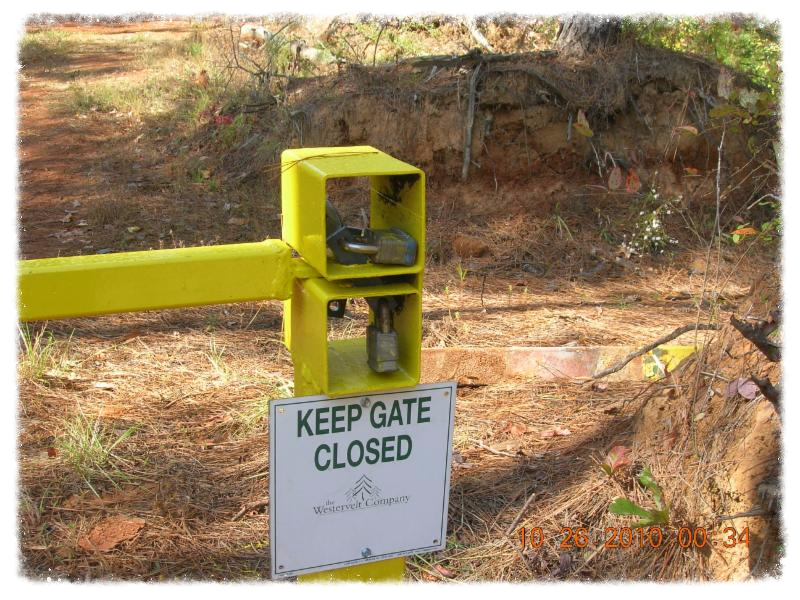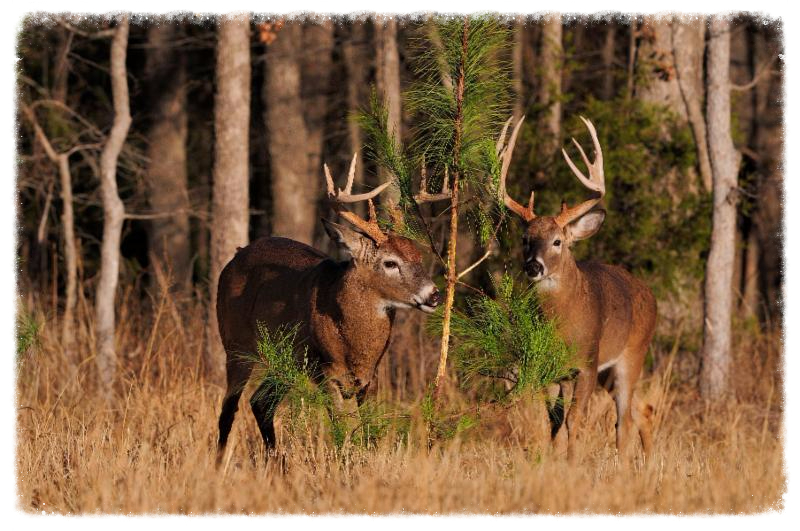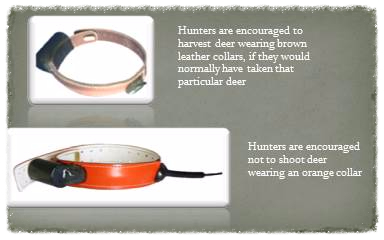Where's Our Lock?
Each year thousands of hunting club members head to the woods to hunt on Westervelt hunting leases. During the off-season, there is also much activity. These activities may include timber management, gas well and pipeline work, food plot maintenance and planting, camp clean-up and repair, and hunting stand placement. With all the people accessing Westervelt managed property, it has become increasingly difficult to keep up with whose lock is whose. Locks belonging to both Westervelt (or other landowners) and the hunting clubs frequently turn up missing, broken or locked incorrectly. Forestry personnel and contractors as well as hunt club members then find themselves locked in or out. Westervelt lease biologists and forest managers spend a lot of time trying to straighten out these lock problems. One thing that would help, especially when multiple-lock gates are used to accommodate more than one club or user, is for the hunt clubs to regularly identify their locks. The easiest way to do this is to write the club's name on both sides of the lock with a black water-proof (indelible ink) marker. If the club name is really long abbreviate it or just write "HC".

We would like to ask our clubs to take care of this chore as soon as possible and to re-mark their locks periodically as necessary. Although we cannot do much about the "midnight lock thieves," we hope to make it easier to identify locks and correct problems when they occur.
|
 |
|
|
Offering our customers more services and resources than any other hunting lease provider, Westervelt Wildlife Services aims to make your outdoor experiences on managed forestland the best possible. Our newsletter is packed with information to help you successfully manage your hunting club while getting the most enjoyment from your hunting lease. |
Create Luck To Get Your Buck!
Each year we receive many phone calls and emails from Westervelt hunting club members who are not seeing many deer and want to know: what happened to the deer? These calls often start coming in around the 2nd or 3rd week of the season. Many of these hunters were seeing deer to begin with, but not anymore. What happened?

In most cases it is the result of heavy hunting pressure and/or poor hunting strategies. As hunting season approaches the woods start getting a little noisier with tractors planting plots or mowing roads, ATV's rambling around, truck traffic, and scouting efforts by hunters on foot. Believe us, after living in a relatively quiet environment throughout the summer with little disturbance, deer know something is going on. Once hunting season starts the woods fill up with hunters, 4-wheelers, ATV's, and trucks ... and the deer react.
Everyone has heard about "hunting pressure," but what is considered too much "pressure?" Pressure can be defined as a number of things including riding around on the property, setting up stands, scouting, walking in and out of the woods, shooting, and all the foreign scents associated with these activities. Whether you see a deer or not they see or smell you at some point, and you are certainly impacting their behavior and movement. Westervelt collects and analyzes tons of hunter observation data each year from our hunting clubs and wildlife consulting clients. Without question, the best hunting occurs on properties that receive the least pressure. This is particularly true for food plot hunting. Hunter observation data indicates deer observations are directly related to the number of times the stand has been hunted. This is particularly true for mature buck sightings. The bottom line to maximize your hunting quality is to minimize hunting pressure and disturbance.
So back to the question of "what happened to the deer?" Hunting pressure obviously effects deer movements. However, we often find hunting strategies are more to blame. After talking with most hunters we find they are spending most of their time hunting food plots; and usually the same food plots. Again this is hunting pressure related. To increase your success, we recommend hunting food plots during the first week or so to catch an old buck off guard then change strategies and start hunting the woods and clear-cuts. As the rut kicks in, start hunting food plots again but don't over-hunt them. Although many good bucks are taken in food plots, most GREAT bucks are harvested in the woods. On Westervelt lands, the best bucks are generally taken in 2-3 year old clear-cut areas or near thick young pine plantations.

Even with a well thought hunting strategy and plan, luck plays a role in observing and harvesting a nice buck. You have to be at the right place at the right time. However, we have hunting club members who seem to be "lucky" every year. These hunters put the odds in their favor and create their own "luck!" We hope you have a safe and successful hunting season and look forward to seeing your harvest data.
|
Update on the Deer Movement and Mortality Study
Auburn University School of Forestry and Wildlife Sciences personnel are currently working in coordination with the Alabama Division of Wildlife and Freshwater Fisheries, The Westervelt Company, and other private landowners to research adult white-tailed deer across Alabama. The overarching goal of this study is to gain a better understanding of the survival and fine-scale movement of white-tailed deer within the state for the enhanced management of this important natural resource.
|
|
| A mature buck fitted with a radio collar in Marengo County |
To conduct the research, male and female deer of various adult ages are being captured using sedatives and then either fitted with a VHF (Very High Frequency) radio collar or a GPS collar around the neck of the deer. The VHF radio collars allow the investigators to re-locate the deer following capture and determine if it is still alive or if it has died. When mortality has been indicated by the collar, the body can be recovered and the cause of death can be identified. In this way, the state will learn what ages of deer are most susceptible to mortality and what the main causes of mortality are. This part of the study also aims to determine deer mortality due to hunter harvest. For this reason, hunters are encouraged to treat deer they see in the field wearing these plain, brown leather collars as if they were not collared at all. This means a hunter should feel free to harvest a VHF radio collared deer if they would normally have taken a deer of that sex and age, but refrain from shooting collared deer simply because of the collar. This will ensure the data for the study are unbiased and accurate. All collared deer will be safe for consumption by the fall 2015 deer season. Hunters who harvest a collared deer, whether intentionally or by mistake, should contact the phone number located on the collar so that this information can be included in the study.

The GPS collars that some deer will be wearing record the precise location of the deer several times each day throughout the year. This information is stored on the collar until the scheduled fall-off date in the spring of 2016. At that time, the collar can be retrieved by the investigators and the locations downloaded and analyzed. This information will be used to determine home range sizes of male and female deer of various ages across Alabama, what habitats are being used most often by deer, and how deer change their behavior at different times of the year.
These collars are blaze orange in color and hunters are encouraged NOT to shoot deer wearing a GPS collar. It is important that these deer be allowed to live for the full 2-year study period so the collars can collect all the information that is needed. If a deer with an orange collar is harvested by mistake, the hunter is encouraged to contact the phone number on the collar so the stored data can be retrieved.
Here is a breakdown of where all of the collared deer are as of right now:
Barbour WMA: 17 VHF (8 bucks and 9 does); 7 GPS (3 bucks and 4 does)
Oakmulgee WMA: 12 VHF (2 bucks and 10 does); 9 GPS (2 bucks and 7 does)
Pickens Co: 20 VHF (7 bucks and 13 does); 10 GPS (5 bucks and 5 does)
Marengo Co: 11 VHF (6 bucks and 5 does); 4 GPS (3 bucks and 1 doe)
Survival of the VHF deer will be monitored through the end of March 2016 and at that time, all GPS collars will be collected and we can start finding out what these deer have been up to all this time! It should be a very exciting time and we will keep you all informed as to what we find as we begin analyzing these data.
|
|
We appreciate your business.
Good Hunting!
Westervelt Wildlife Services 800-281-7991
|
|
|